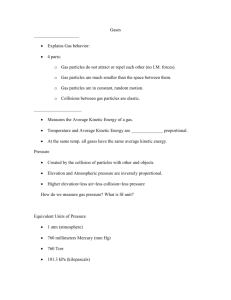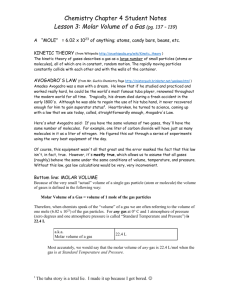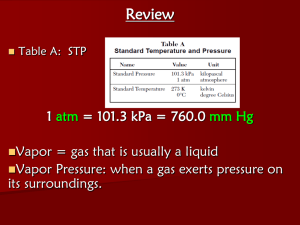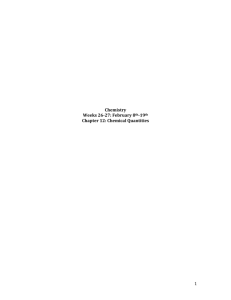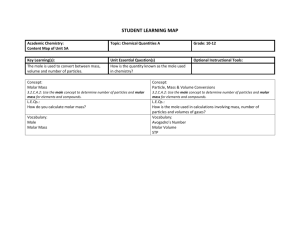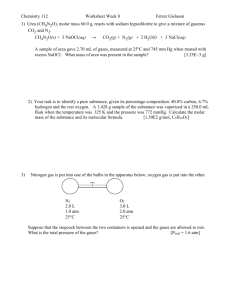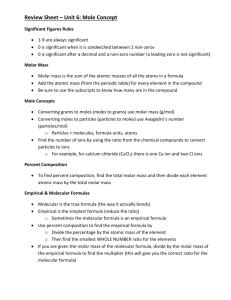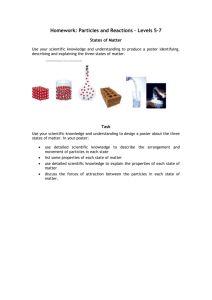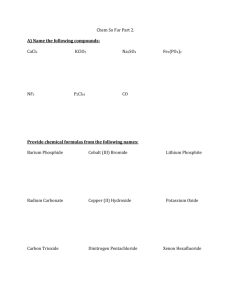CP Chem Unit 10 Gases
advertisement
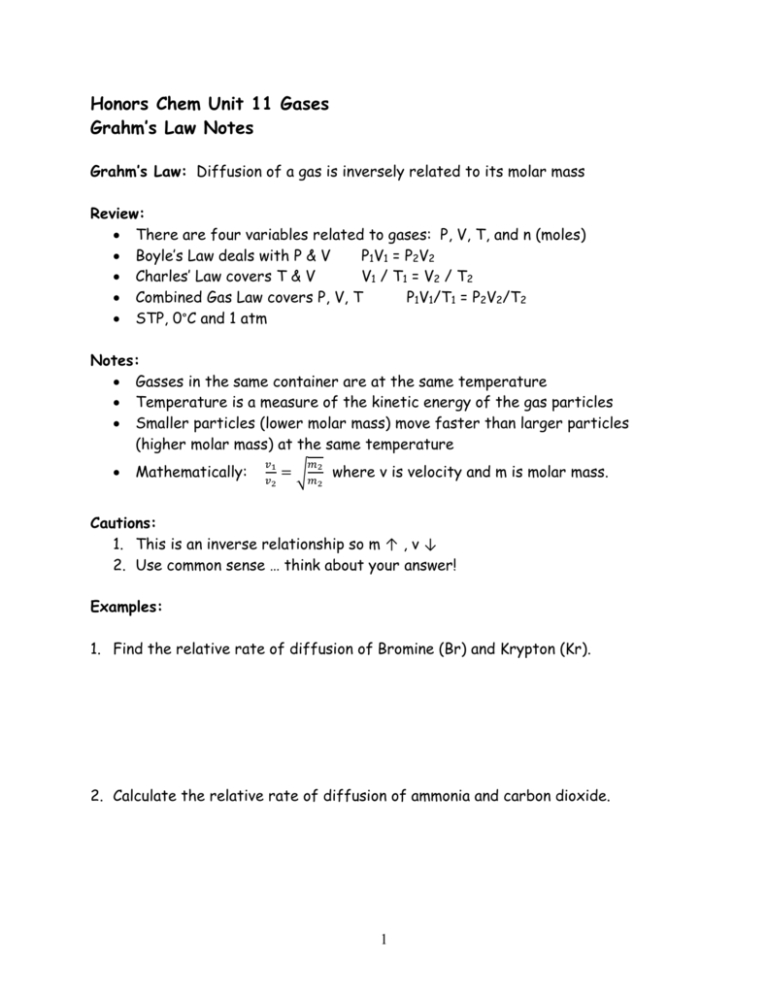
Honors Chem Unit 11 Gases Grahm’s Law Notes Grahm’s Law: Diffusion of a gas is inversely related to its molar mass Review: There are four variables related to gases: P, V, T, and n (moles) Boyle’s Law deals with P & V P1V1 = P2V2 Charles’ Law covers T & V V1 / T1 = V2 / T2 Combined Gas Law covers P, V, T P1V1/T1 = P2V2/T2 STP, 0°C and 1 atm Notes: Gasses in the same container are at the same temperature Temperature is a measure of the kinetic energy of the gas particles Smaller particles (lower molar mass) move faster than larger particles (higher molar mass) at the same temperature Mathematically: 𝑣1 𝑣2 𝑚 = √𝑚2 where v is velocity and m is molar mass. 2 Cautions: 1. This is an inverse relationship so m ↑ , v ↓ 2. Use common sense … think about your answer! Examples: 1. Find the relative rate of diffusion of Bromine (Br) and Krypton (Kr). 2. Calculate the relative rate of diffusion of ammonia and carbon dioxide. 1 3. Which gas diffuses faster in Oxygen, carbon dioxide or carbon monoxide? Why? ______________________________________________________________ ______________________________________________________________ ______________________________________________________________ ______________________________________________________________ ______________________________________________________________ ______________________________________________________________ ______________________________________________________________ ______________________________________________________________ ______________________________________________________________ ______________________________________________________________ 4. Which gas diffuses faster Neon or Oxygen? Why? ______________________________________________________________ ______________________________________________________________ ______________________________________________________________ ______________________________________________________________ ______________________________________________________________ ______________________________________________________________ ______________________________________________________________ ______________________________________________________________ ______________________________________________________________ 5. Why can you smell strong perfume across a big room? ______________________________________________________________ ______________________________________________________________ ______________________________________________________________ ______________________________________________________________ ______________________________________________________________ ______________________________________________________________ ______________________________________________________________ ______________________________________________________________ ______________________________________________________________ ______________________________________________________________ 2
